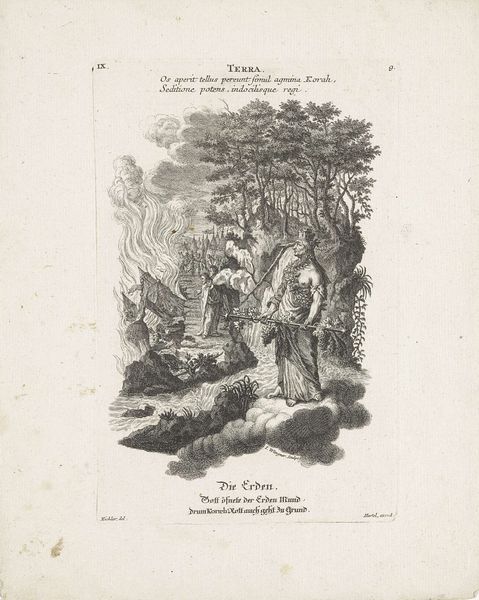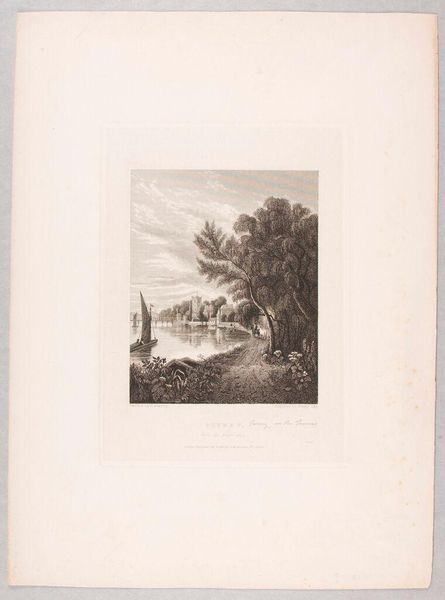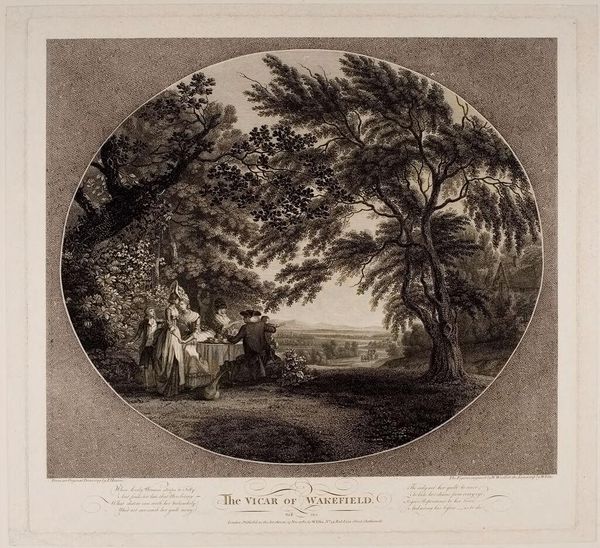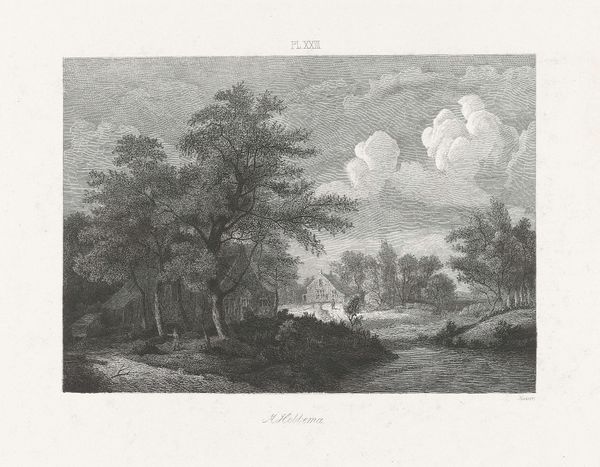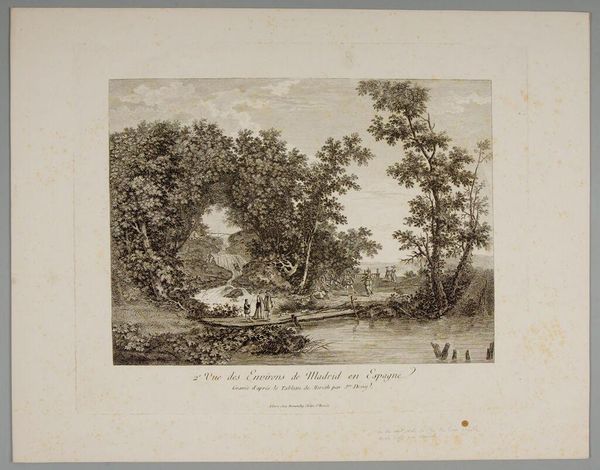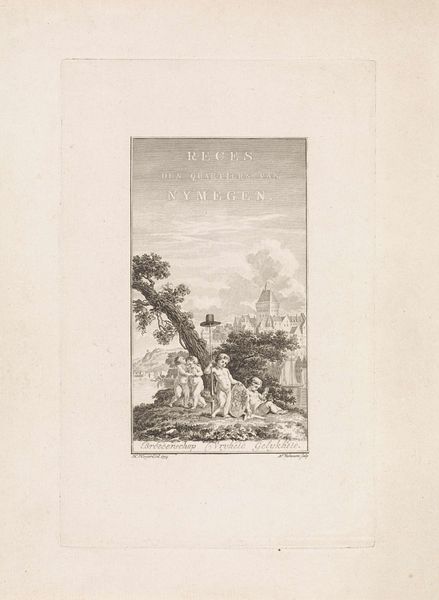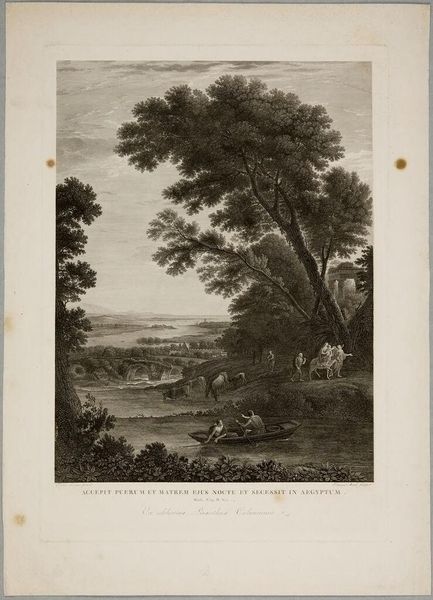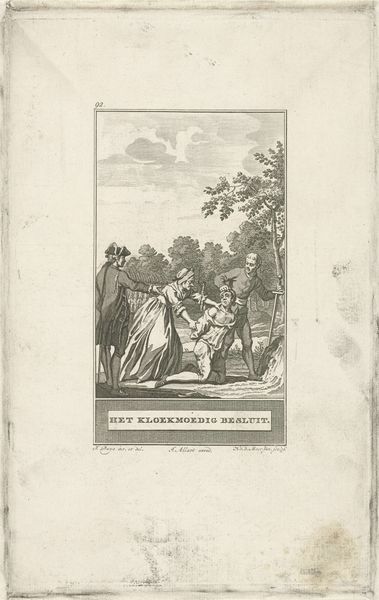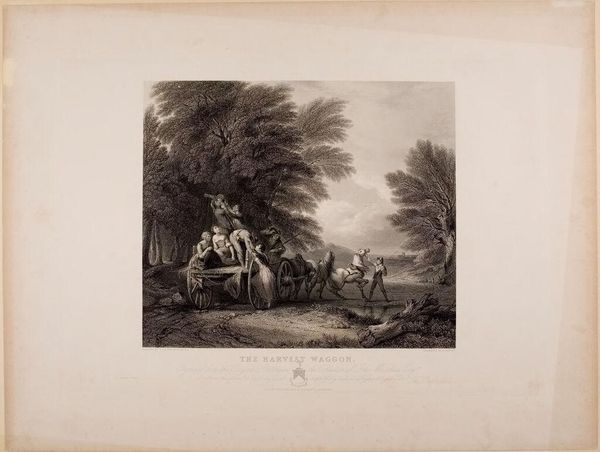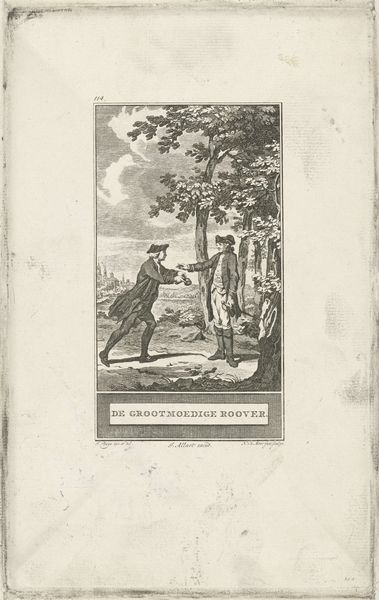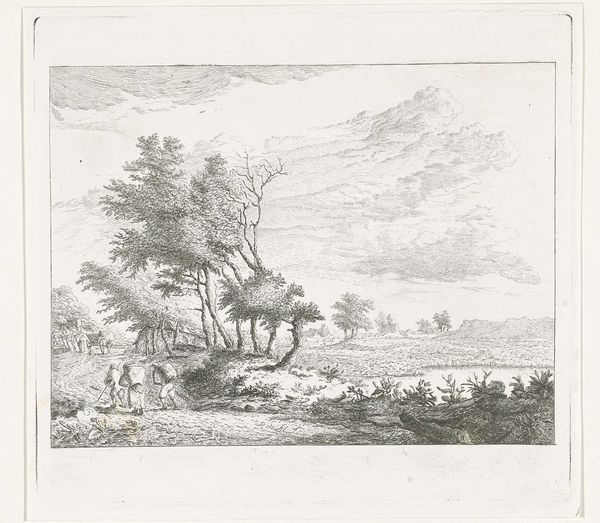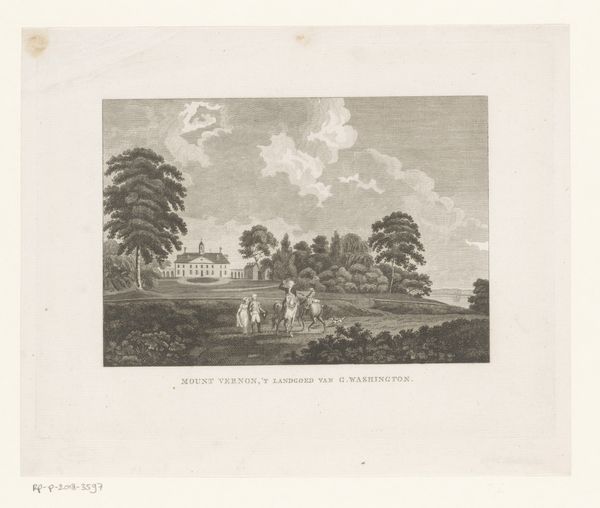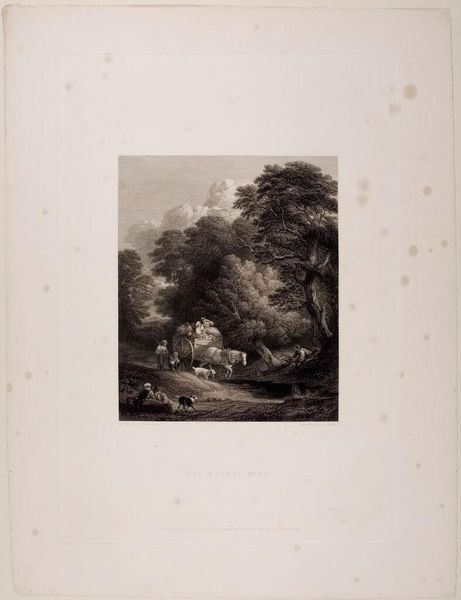
Titelpagina voor: A. Loosjes Pz. 'Historie van Mejuffrouw Susanna Bronkhorst', 1806 1806
0:00
0:00
reiniervinkeles
Rijksmuseum
Dimensions: height 248 mm, width 163 mm
Copyright: Rijks Museum: Open Domain
Curator: Here we have the title page for A. Loosjes Pz.'s "Historie van Mejuffrouw Susanna Bronkhorst," created in 1806 by Reinier Vinkeles. It’s an engraving, part of a larger published work. Editor: My eye is immediately drawn to the scene below the title. It’s delicate, almost ethereal. The greyscale hues give it a dreamy, sentimental feel, like a faded memory. Curator: Indeed. Engravings like this served a crucial function. They weren’t just decorative; they were a form of visual storytelling. Before widespread photography, prints like this provided accessible imagery linked to popular literature. Think of it as a book cover of its time, setting the tone and hinting at the narrative. Editor: The precision of the lines is striking, especially considering the technology of the time. I wonder about the labor involved in creating the matrix and the printing process. Was Vinkeles himself deeply involved in the printing? Or was he primarily a designer, and others managed the more manual tasks of replication? Curator: It's quite plausible he would have been involved in both aspects, or at least overseeing it closely. As an iconographer, though, I am also taken by the almost allegorical staging of the figures: the cautious man on the left, the frolicking woman further in the distance... What possible meanings and moral lessons were embedded into the story as conceived? Editor: You know, noticing those contrasting figures reinforces the art's commentary on 19th century societal gender roles. Did Susanna challenge the established gender conventions within that society, or perpetuate them? I also question what access the public has had to the piece in time. Are such narratives inclusive to certain classes, genders, etc. during their creation or circulation? Curator: These kinds of images were relatively more accessible because of print techniques that allowed wide circulation compared to paintings for example. But there’s always a hierarchy implicit in cultural creation. We can’t forget these objects, like novels, plays, prints, and so on shaped social conduct by encoding lessons, beliefs, worldviews of people. Editor: Well, the layers here are denser than they might first appear. We can see the engraving less as an isolated decorative item and more like the tip of an iceberg, a representation of a much bigger cultural process that’s shaped by production and materials. Curator: Yes, exactly. Ultimately, this title page pulls us in multiple directions to think through the power of symbolic representation within the everyday. Editor: Precisely, inviting us to examine how those stories and visual markers impact both production of artwork and social change.
Comments
No comments
Be the first to comment and join the conversation on the ultimate creative platform.
